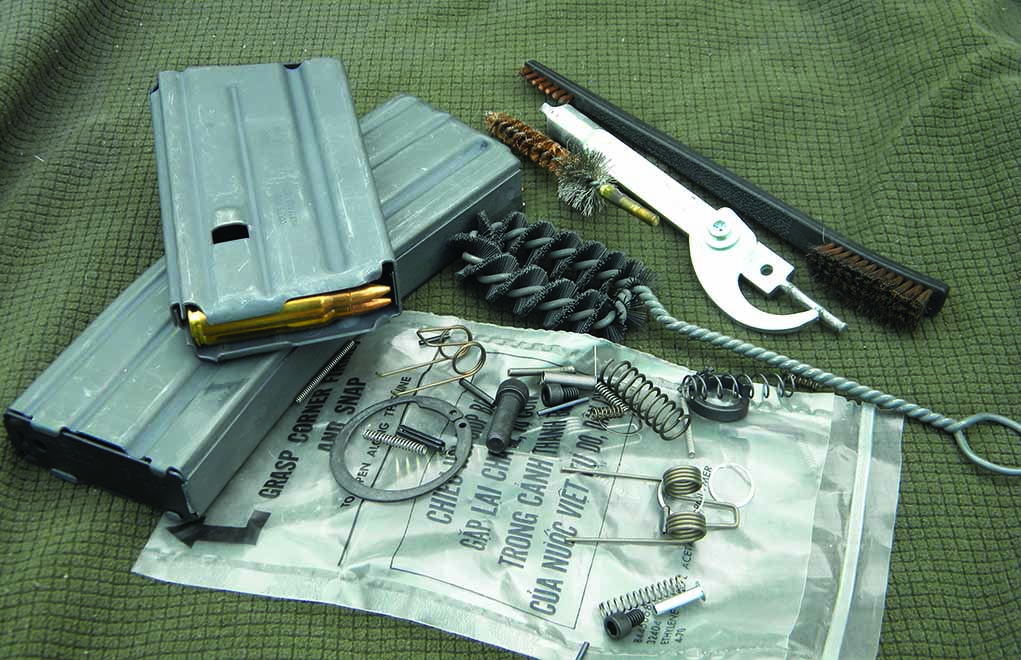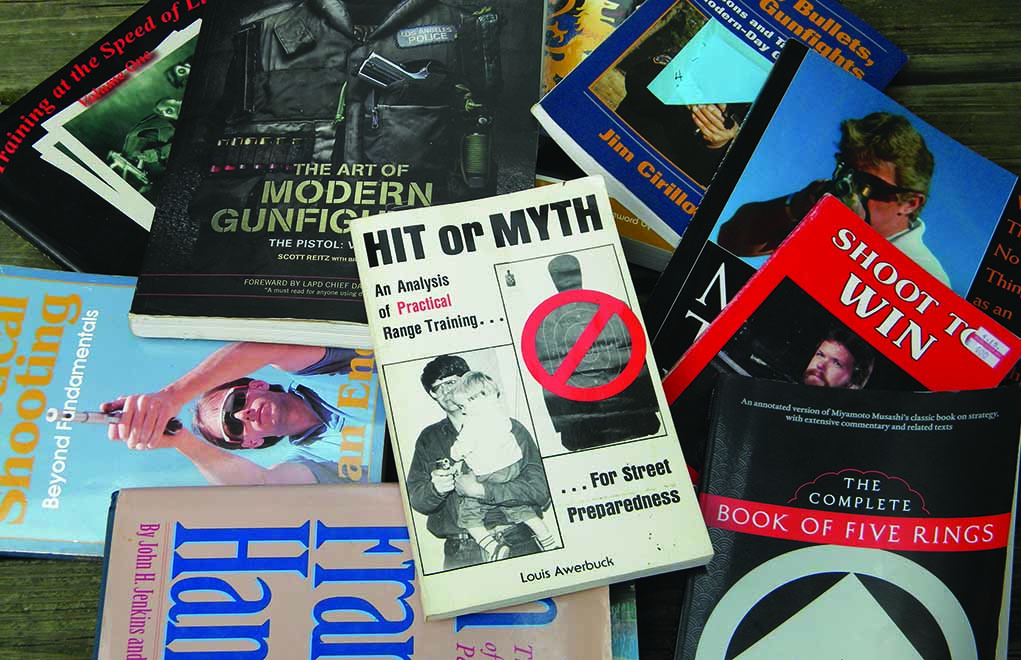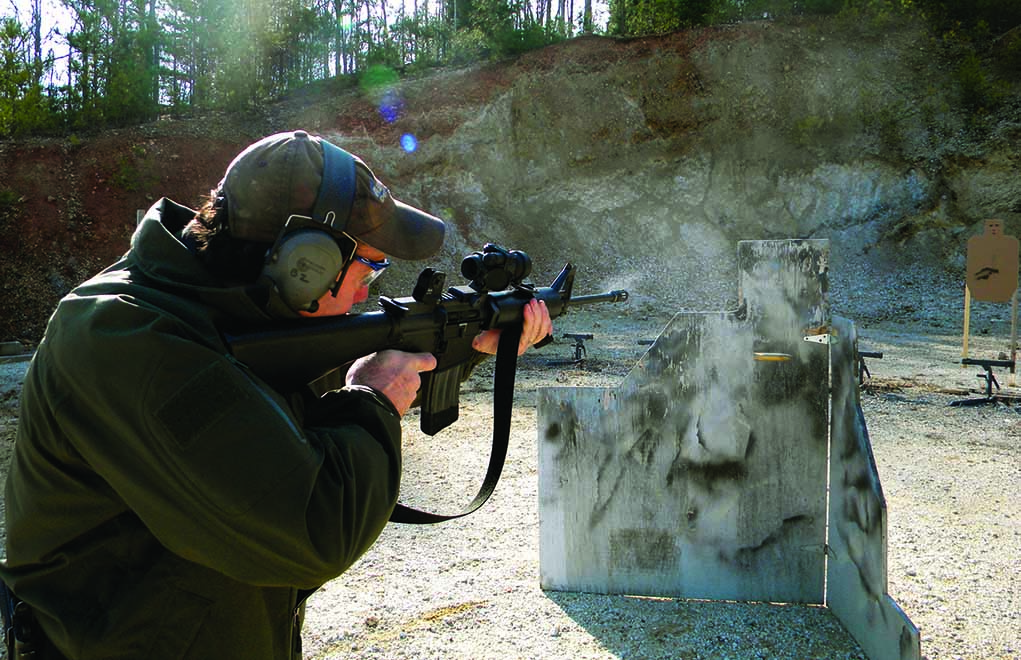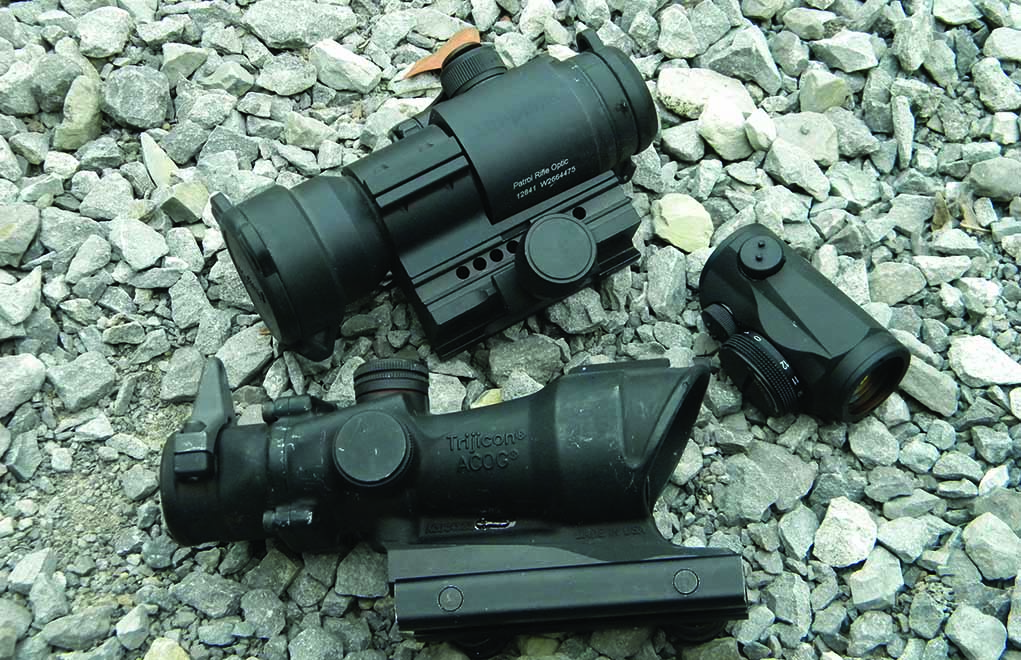
Building, upgrading and becoming proficient with your AR-15 can quickly add up to big bucks. So how should you spend your money to get the most out of your carbine?
What Are The AR-15 Essential You Should Prioritize Your Money For:
- Cleaning and maintance gear
- Spare and replacement parts: pins, springs, etc.
- Magazines and ammo
- Proper training and educational material
Each year brings about an assortment of new products and supplemental gear that’s released for the AR platform — even different configurations of rifles, carbines and “new” calibers.

Everyone likes procuring new gear. Sometimes it’s something we really need — it fits a specific application — or it’s a new piece of gear we simply want. And then there are training classes we want to schedule and attend.
Few of us have the ability to buy everything we need or desire, which means we have to choose. So, when it comes to budgeting your “AR dollars,” there are main “clusters” I like to organize all this into: essentials, entertainment and education.
AR-15 Essentials
The “essentials” include everything necessary to clean, maintain and operate the AR. Every AR owner should know how to properly clean their rifle and maintain it, swapping out small parts as needed. There are a few special tools you’ll need to correctly clean the AR, such as a chamber brush. This brush cleans the lugs in the barrel extension, where lugs of the bolt mate up — and at the same time it’s cleaning the chamber.
Also, get a good cleaning rod, which means a one-piece rod that’s coated. I use Dewey. And get a bore guide: It protects the chamber and keeps the cleaning rod traveling straight down the barrel, and that’s highly recommended. The proper cleaning gear isn’t cheap, but it protects your weapon for a lifetime of use. Make sure to budget for the good stuff.

The AR is one of the great firearms ever designed. You’ve heard me say it before, and you’ll hear me say it again. Its simplicity and modular design make is easy to maintain, and most of the parts you need to keep on-hand are small and affordable. Get a breakdown on the parts, and then get replacements and extras. This includes pins, springs and detents for the trigger and bolt groups. Having spare bolt is a good idea.
Items such as magazines and ammo also fall into this category. The availability and price of ARs and related gear can be very fluid … and the same is true of ammo. I’ve seen this scenario olay out several times during the past 40 years: A tragedy occurs. Politicians and the media start talking “gun control. And then anything related to the AR either sells out or rises greatly in price — regardless of the caliber. Almost overnight.
Need More AR Knowledge:
- 7 Affordable 9mm Carbine Options
- Top Options In AR Pistols From Daniel Defense
- Properly Using A Defensive AR-15 From Cover
- Should You Own A Pistol Caliber Carbine?
Right now, items such as parts, magazines and ammo are plentiful and affordable. Put some money aside to grab necessities each month. One thing is for sure: These items are always a good investment.
Speaking of investments, I consider upgrading and acquiring new gear as an investment: I’m spending money in hopes of making things better. Some upgrades are not that stiff — swapping out grips or changing slings. Clamping an optic on top your AR, on the other hand, is going to be more financially significant. There are budget options out there, but if the reason for shooting is important — lives might depend on your ability to make an accurate shot every time — you can’t skimp on that scope or red-dot sight. Study and research well, and make sure you get exactly what you need. Having to buy a piece of gear twice is a lot more expensive.
Entertainment
Sometimes, there’s just something you want — the “entertainment” category — even though there’s no justifiable need for it … it’s just a piece of gear you’ve been yearning for. Gear like this should be budgeted for over a longer period of time — it should never be a spur of the moment decision or impulse purchase. And it’s my strong opinion that you don’t pay for something unnecessary by “borrowing” from one of the other funds, no matter how cool it is.

allot money for additional ammo.
For example I’m fascinated by thermal vision gear. I’d like to have some, but the probability of me actually needing it is extremely low. So, I keep saving — the compact, good stuff is expensive. And who knows, maybe while I’m saving the technology will keep advancing and the prices might drop.
Education
One area a lot of AR owners don’t budget for is training. Owning an AR — or any firearm — requires knowing how to use it safely and efficiently. Any time you’re around firearms, safety is your No. 1 concern — we all know this but few invest in it. This is also true in the field and during defensive encounters.
Most everyone knows the at least some rendition of the four basic safety rules of firearm safety:
Rule I: All guns are treated as though loaded.
Rule II: Never point the muzzle at anything you’re not ready or willing to shoot.
Rule III: Keep your finger off the trigger until the sights are on target.
Rule IV: Make sure to identify your target and what’s surrounding and behind it.
With training, you understand why Rule II is so important with ARs. The AR has a free-floating firing pin. Every time a round is chambered, the firing pin strikes the primer, though usually not with enough force to ignite it. Even though it’s very rare, the AR can fire during loading or reloading. Keep the muzzle pointing downward in safe direction. Always.

The techniques used to manipulate the AR are not instinctual. The AR is ergonomic, and once learning the proper techniques for loading/unloading, reloading and clearing stoppages, you’ll understand this: All the controls are in just the right place … and having someone teach you how to manipulate them most efficiently is a great investment. This is especially critical for defensive use: On the range or in competition, not knowing how to reload or clear a stoppage efficiently means no trophy — in a fight, these skills could be the difference between life and death.
Plus — and this is important — training introduces you to defensive principles and techniques needed to respond to a threat. We’re not born knowing how to fight with firearms. Training, followed by plenty of practice, is required. You need to budget for training, and the ammunition required for live-fire practice after attending class.
For me, this category also includes books and other reference material. Yes, there are videos, etc out there for free, but what I call the “good” stuff, both past and present, is mostly available in book format. Plus, I like to turn down pages, highlight and make notes in the book. You can’t do this on a computer. The act of writing makes a mental connection that typing doesn’t. You learn more from an actual book, but they are expensive.
As time passes, the more I realize that it’s about software — and not hardware. I get the same amount of pleasure shooting a vintage carbine from the ‘70 as I do a contemporary version of the AR. And I could use a plain-Jane carbine to defend my life.
However, my modern sporting rifle with a red-dot sight, weapon-mounted light and ALG combat trigger does make the job easier. And, regardless of how old I get, budgeting for the essentials, entertainment and education components of AR ownership still require me to keep a budget.
Editor's Note: This article originally appeared in the December 2018 issue of Gun Digest the Magazine.

Next Step: Get your FREE Printable Target Pack
Enhance your shooting precision with our 62 MOA Targets, perfect for rifles and handguns. Crafted in collaboration with Storm Tactical for accuracy and versatility.
Subscribe to the Gun Digest email newsletter and get your downloadable target pack sent straight to your inbox. Stay updated with the latest firearms info in the industry.

![Best Concealed Carry Guns In 2025 [Field Tested] Wilson Combat EDC X9S 1](https://gundigest.com/wp-content/uploads/Wilson-Combat-EDC-X9S-1-324x160.jpg)


![Best 9mm Carbine: Affordable PCCs [Tested] Ruger Carbine Shooting](https://gundigest.com/wp-content/uploads/Ruger-Carbine-Shooting-100x70.jpg)
![Best AR-15: Top Options Available Today [Field Tested] Harrington and Richardson PSA XM177E2 feature](https://gundigest.com/wp-content/uploads/Harrington-and-Richardson-PSA-XM177E2-feature-100x70.jpg)
